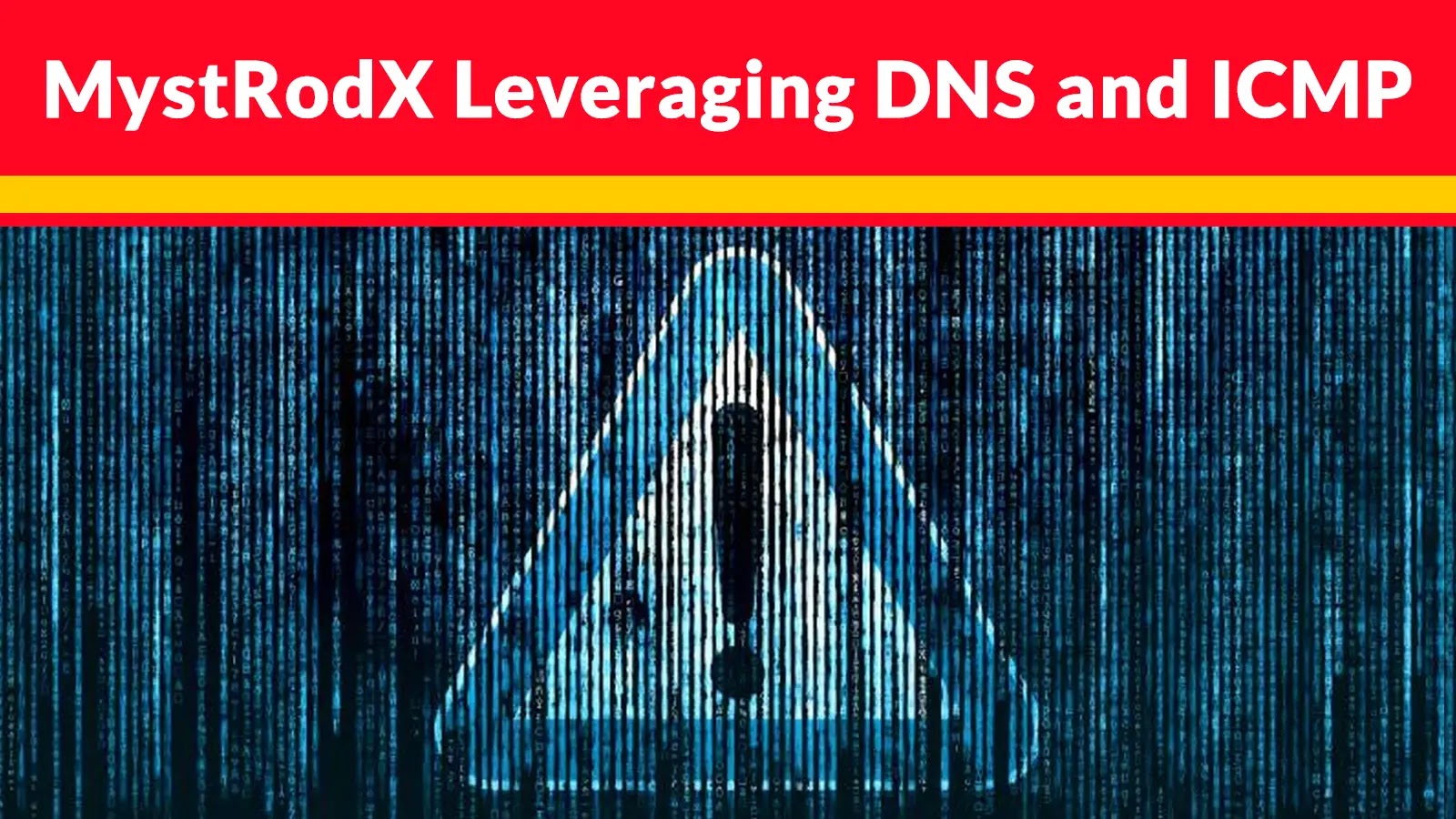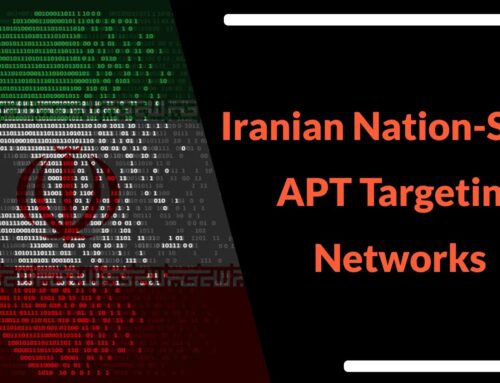
MystRodX Leveraging DNS and ICMP to Steal Sensitive Data From Hacked Systems
The silent infiltrator. For nearly two years, a sophisticated new backdoor malware has operated under the radar, bypassing established security protocols and pilfering sensitive data from compromised systems. Known as MystRodX, this threat illustrates a significant leap in stealth malware design, leveraging seemingly innocuous network protocols like DNS and ICMP for covert communication and data exfiltration. Understanding MystRodX’s unique modus operandi is crucial for fortifying our defenses against an increasingly adaptive threat landscape.
MystRodX: A New Breed of Stealth Malware
Initially misidentified as a variant of the Mirai botnet, MystRodX quickly distinguished itself as a far more advanced and persistent threat. Its longevity in undetected operations—over 20 months—speaks volumes about its evasion capabilities. What truly sets MystRodX apart is its dual-mode activation system, designed for maximum stealth and resilience.
- Dual-Mode Activation: MystRodX employs a sophisticated mechanism to initiate its operations, ensuring it only activates under specific, carefully controlled conditions. This prevents accidental detection and allows the malware to lie dormant until the opportune moment.
- Mimicking Legitimate Traffic: Unlike many conventional malware strains that generate easily detectable traffic patterns, MystRodX masterfully blends its malicious communications with legitimate network activity. This camouflage is central to its long-term evasion strategy.
DNS as a Covert Channel
One of MystRodX’s primary communication channels is the Domain Name System (DNS). While DNS queries are fundamental for internet functionality, MystRodX abuses this protocol for command and control (C2) and data exfiltration. Instead of resolving domain names, the malware encodes exfiltrated data or C2 commands within DNS queries or responses. This technique, often referred to as DNS tunneling or DNS exfiltration, is incredibly effective because:
- Ubiquity: DNS traffic is almost always allowed through firewalls, making it an ideal vector for bypassing network perimeter defenses.
- Volume: The sheer volume of legitimate DNS traffic provides ample cover for malicious communications.
- Lack of Deep Inspection: Many security solutions perform only superficial analysis of DNS packets, failing to detect the anomalous structure or content indicative of tunneling.
ICMP: The Undetected Courier
In addition to DNS, MystRodX also leverages Internet Control Message Protocol (ICMP) for covert communication. ICMP is primarily used for network diagnostic messages and error reporting (e.g., ping). However, similarly to DNS, MystRodX manipulates ICMP packets to transmit sensitive data or receive directives from its C2 server. This method is effective because:
- Bypassing Firewalls: ICMP traffic is often permitted through firewalls for network diagnostic purposes, creating another open door for the malware.
- Lower Scrutiny: ICMP traffic typically receives less scrutiny from Intrusion Detection/Prevention Systems (IDS/IPS) compared to HTTP(S) or other higher-level protocols.
- Payload Embedding: Data can be embedded within the data field of ICMP echo request or reply packets, appearing as legitimate diagnostic traffic.
Impact on Hacked Systems
Once MystRodX establishes its foothold and covert communication channels, the impact on compromised systems can be severe. The malware is designed to steal sensitive data, which can include:
- User credentials
- Financial information
- Proprietary business data
- Intellectual property
- System configurations and network topology information
The exfiltration of such data can lead to significant financial losses, reputational damage, and regulatory penalties for affected organizations.
Remediation Actions
Mitigating the threat posed by advanced malware like MystRodX requires a multi-layered security approach focusing on network visibility and advanced behavioral analysis.
- Enhanced DNS Monitoring: Implement solutions that perform deep packet inspection of DNS traffic, looking for unusual query patterns, abnormally long domain names, or non-standard data within DNS fields. Consider CVE-2022-26166 related to DNS resolver vulnerabilities that could be exploited.
- ICMP Anomaly Detection: Monitor ICMP traffic for excessive volume from a single host, unusual payload sizes, or atypical sequences of ICMP messages that could indicate covert channel activity.
- Network Segmentation: Implement strict network segmentation to limit the lateral movement of malware within your network, even if an initial compromise occurs.
- Endpoint Detection and Response (EDR): Deploy EDR solutions capable of detecting fileless malware, unusual process behavior, and suspicious network connections originating from endpoints.
- Traffic Analysis: Utilize Network Traffic Analysis (NTA) tools that baseline normal network behavior and flag anomalies. These tools can often detect DNS tunneling or ICMP exfiltration even without specific signatures.
- Principle of Least Privilege: Ensure that user accounts and services operate with the minimum necessary permissions to reduce the potential damage if compromised.
- Regular Security Audits: Conduct frequent security audits and penetration testing to identify and address vulnerabilities before they can be exploited by threats like MystRodX.
Relevant Tools for Detection and Mitigation
Securing against threats like MystRodX requires a robust toolkit for network monitoring and analysis.
| Tool Name | Purpose | Link |
|---|---|---|
| Zeek (Bro Network Security Monitor) | Comprehensive network traffic analysis, including deep DNS and ICMP logging and anomaly detection. | https://zeek.org/ |
| Suricata | Open-source IDS/IPS engine with rules for detecting various network-based attacks, including some forms of tunneling. | https://suricata-ids.org/ |
| Corelight (Commercial Zeek) | Enterprise-grade network visibility and detection built on Zeek, offering advanced analytics. | https://www.corelight.com/ |
| Wireshark | Packet analysis tool for detailed examination of DNS and ICMP traffic at the packet level. | https://www.wireshark.org/ |
| DNS sinkholing solutions | Redirect malicious DNS queries to a controlled server, preventing C2 communication. | (Vendor-specific, e.g., Cisco Umbrella) |
Conclusion
MystRodX serves as a stark reminder that cyber adversaries are continually evolving their tactics to evade traditional security defenses. Its long period of undetected operation and sophisticated use of common protocols like DNS and ICMP underscores the critical need for deeper network visibility, behavioral analysis, and proactive threat hunting. Organizations must move beyond signature-based detection to embrace solutions that can identify the subtle anomalies indicative of advanced, stealthy threats.





